|
   |
|
Page 5 |
Newsletter 147 Winter 2024 © Hampshire Mills Group |
|
Water Mills in Madeira
Ruth Andrews
Photos by Keith and Ruth Andrews
|
Finally, at the third time of trying, we got to
Madeira, having been thwarted first by Covid, and
then by the wind preventing planes from landing.
Apart from wine, Madeira is famous for its system of
levadas, gently sloping water channels which cling
to the rocky hillsides and bring water for
cultivation and as a source of water power. They
are a popular way of hiking without climbing steep
hills, but you have to have a head for heights as
there are often vertiginous drops at the side. |
|
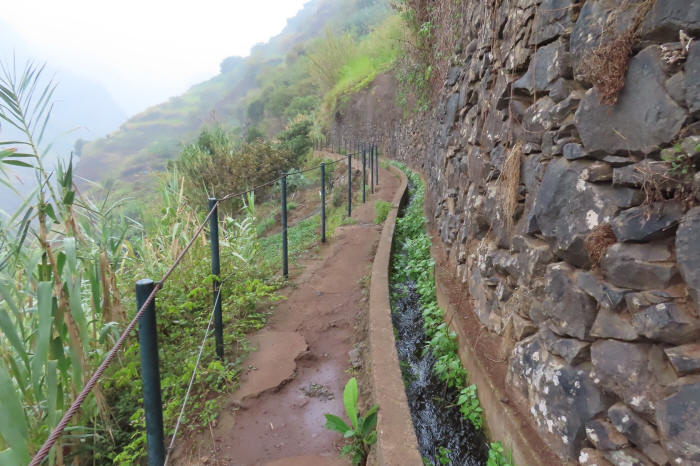
We chose to explore one called Levada do Moinho
at Lombada near Ponto do Sol in the expectation that
there would be a mill involved, which indeed there
was. At the lower end of the levada, the water
could be diverted to flow along a horizontal launder
before dropping down a 5m vertical tower to the
mill’s horizontal wheel.
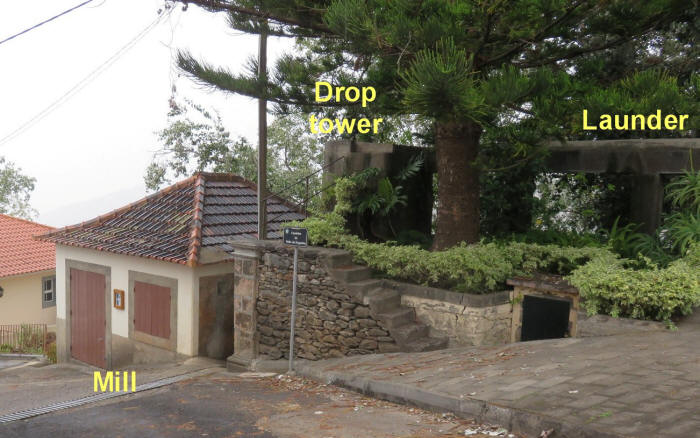
We next visited a working watermill in São Jorge.
Over 300 years old, it was recently restored, and
is said to be the last one operating in Madeira.
The simple building is
constructed of rough basalt blocks, with its name
spelled out with letters made of dried corn cobs.
The mill is very basic with two pairs of stones,
driven by a horizontal wheel, fed from a levada far
above.
The miller had a very
friendly ginger cat as you can see from the
pictures. He said he was milling barley, and could
produce 6 tonnes a month. The mill also formed a
museum, with various objects such as a quern, a
grinding pot, and a hand-driven rotary corn cob
separator.
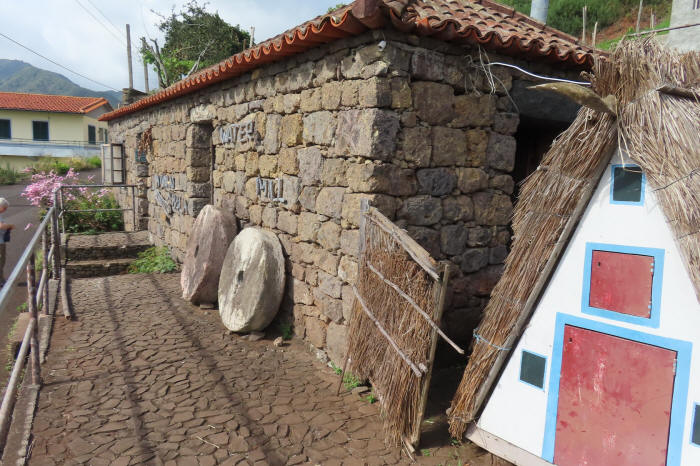 |
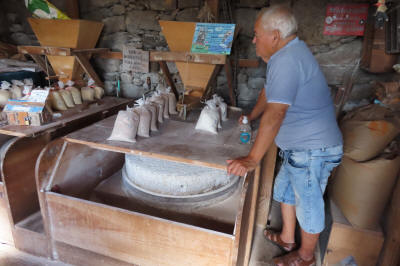 |
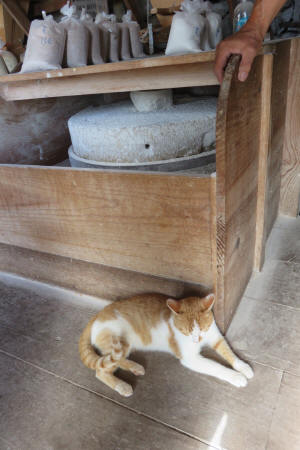 |
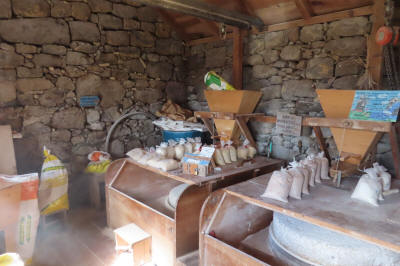 |
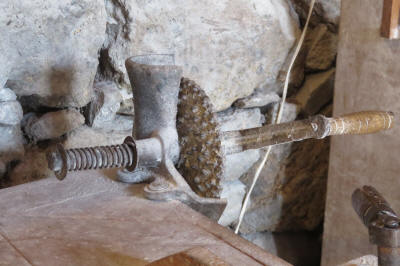 |
|
We were not able to see
the horizontal water wheel, but several days later
in the Ethnographic Museum in Ribeira Brava
we saw a display with two horizontal metal wheels
with ladle-shaped cups, which may have been similar
to those at São Jorge.
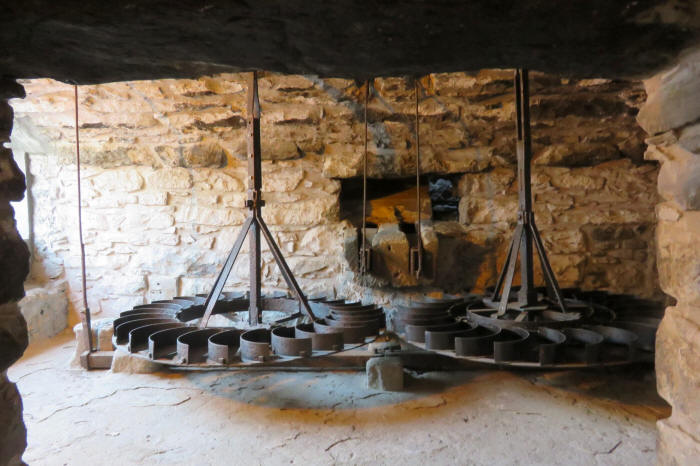
The museum makes almost
no reference to the source of water power, other
than a diagram that we couldn’t photograph. We
worked out that water travelled downhill and along
an overhead launder to the top of the massive
enclosed waterwheel seen below. It was impossible
to see the wheel itself, and the overhead launder
had been removed although a supporting column
remained. |
|
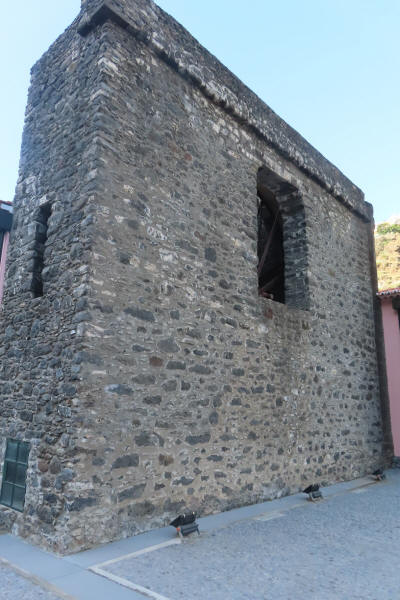
|
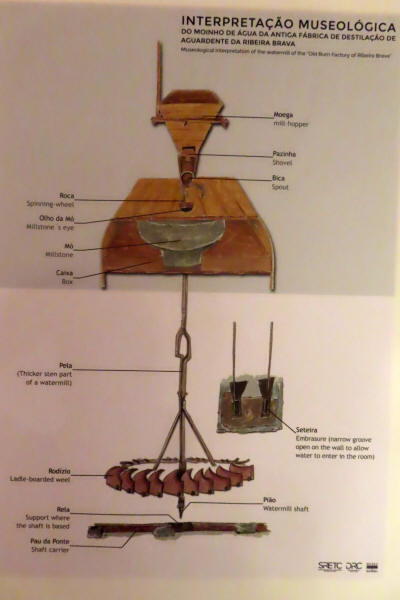
|
|
The waterwheel drove
sugar cane crushing rollers inside the museum
(right).
The water would also
have dropped into the nozzles feeding the two
horizontal wheels with ladle-shaped cups, seen in
the diagram above. I am fairly sure they are not in
their original position because they would have
flooded the museum; perhaps part of the wall has
been removed to make a viewing window.
The museum building
started life as a convent, but was bought by the
then tenant Captain Gonçalves when religious orders
were banned in Portugal in 1760. Eventually in 1853
a local entrepreneur turned it into a sugar cane
mill and rum distillery, from 1862 using water
power, with two cereal mills being added in 1868.
Ultimately the Madeira Regional Government turned it
into a museum in 1996.
|
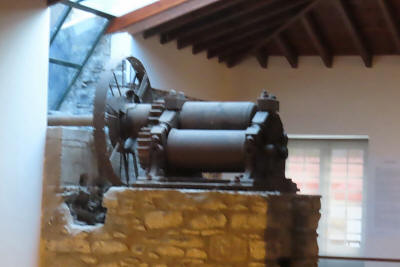 |
|
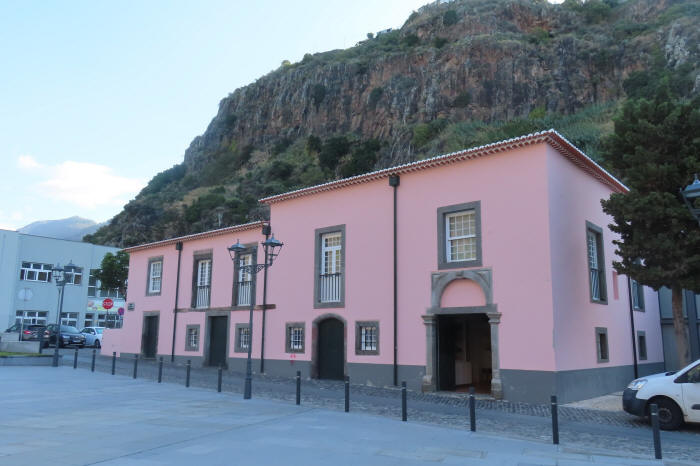 |
| |
|
   |
|
|
